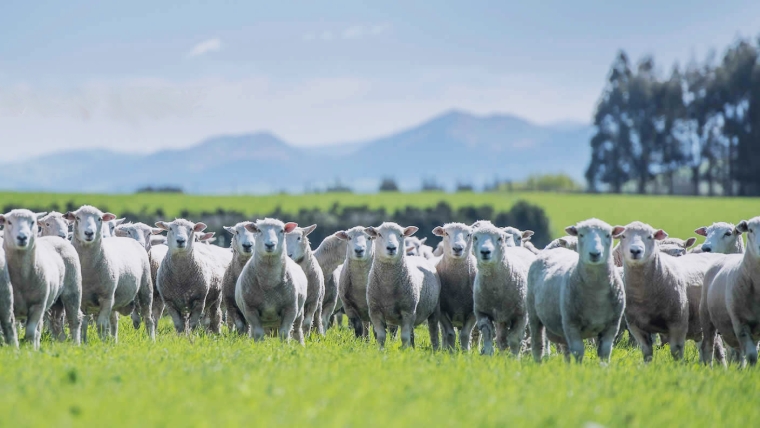
This content is supplied by Rabobank
Reduced global demand for higher-value beef and lamb cuts in the year ahead will see New Zealand farmgate prices for beef and sheepmeat drop from the record highs experienced over recent seasons, according to a new report by agribusiness banking specialist Rabobank.
In the bank’s flagship annual outlook for the meat sector, Global Animal Proteins Outlook 2021: Emerging from a world of uncertainty, Rabobank says a slow and uneven recovery in the international foodservice sector, combined with weak global economic conditions, will reduce demand for higher-value New Zealand red meat cuts such as prime beef and lamb racks.
Report co-author RaboResearch animal protein analyst Blake Holgate said while lower demand for premium cuts would negatively impact export returns, farmgate prices for New Zealand beef and sheepmeat were not expected to drop significantly below long-term averages.
“Reduced demand for higher-value cuts will pull New Zealand beef export returns back from the record highs of quarter four last year, however, we anticipate solid demand for NZ beef out of the US – particularly for manufacturing beef – and China will underpin returns for New Zealand exporters in 2021,” he said.
“Robust Chinese demand will also play a key role in holding up New Zealand sheepmeat prices in the coming year, as will strong global retail demand and tight lamb supply here and in Australia.”
The report says New Zealand’s beef production will remain flat in 2021 while the longterm trend of declining New Zealand sheep supplies would continue.
"The country’s beef production in 2021 is expected to remain at similar levels to this year with climatic conditions and farmgate pricing poised to determine if production is above or below 2020 levels,” Mr Holgate said. “The downward trend in New Zealand lamb supplies is forecast to continue for the 2021 season, with poor climatic conditions earlier in the year having impacted stock numbers and lambing percentages in many regions.”
Global animal protein production forecast to rise
On the global front, the report says 2021 will signal a return to animal protein production growth driven by the recovery of China’s pork production. “African swine fever (ASF) remains the biggest change driver in global animal protein, and in the year ahead we expect to see pork production grow faster than any other species, largely because of the recovery from ASF in China and Vietnam,” Mr Holgate said.
According to the report, production in the global poultry, aquaculture and beef sectors is also forecast to grow, while wild-catch seafood production is expected to decline. “Beef production should return to modest growth in 2021, led by increased output from North America and Brazil,” Mr Holgate said. “Taken in aggregate across all the species, the return to growth in 2021 will represent a significant change from the past two years, even though it will not make up for the losses.”
Key opportunities
In addition to the ASF recovery, the report identifies a range of issues affecting global animal protein that create areas of opportunity and risk for sector participants in 2021. Key among these, it says, are global animal protein trade and the pace of Covid-19 recovery.
“China’s pork, poultry, beef and seafood imports are respectively estimated to account for about 45 per cent, 10 per cent, 25 per cent and 10 per cent of global trade in 2020 and it has been using this market dominance to drive down import prices. In the year ahead we expect to see China’s political relationships with its trade partners increasingly influence its sourcing, along with its aims to improve food security and cost.” Mr Holgate said.
“Brexit also shapes as a key trade issue. With the UK and EU yet to finalise a new trade deal, some of the post-Brexit scenarios include a potential surplus of pork and beef in the EU, an increase in meat prices in the UK and a new sizable, high-paying destination for animal protein exporters around the world.”
The report says all of the major animal protein species have been disrupted by the Covid-19 pandemic and identifies several dimensions of change which will define the shape and speed of the recovery. “These include accelerating trends – such as reduced labour availability and the rise of e-commerce – as well as trend reversals – such as a shift to a sales focus on local consumers rather than exports – and the impacts of the economic downturn,” Mr Holgate said.
“Changes to business strategies will also impact the recovery and, given the events of the past nine months, we expect to see businesses increasingly focused on building resilience, investing in agility and building trust, with workers, regulators, suppliers and consumers.”
Sustainability in the supply chain
Mr Holgate said sustainability in the animal protein supply chain continues to be a hot issue around the globe and the role of markets and regulators was expected to become clearer in 2021.
“Despite criticism from some, consumer preference toward eating meat is still high but will only remain high if animal protein supply chains proactively take steps to reduce emissions or lower their sustainability footprint. Accordingly, we expect the number of animal protein, food retail and foodservice companies making commitments to lower greenhouse gas (GHG) emissions throughout their supply chain will continue to grow in the coming 12 months,” Mr Holgate said. “At the same time, regulatory targets in relation to sustainability are increasingly being set around the globe, however the road to achievement remains unclear. In 2021, we anticipate governments will face pressure to impose regulations to drive change if the market isn’t seen to be delivering progress at the scale and speed expected by society.”
Mr Holgate said regardless of whether a market-driven or regulatory approach prevails, three key steps would be crucial to accelerating sustainability progress in the sector.
“Firstly, an improved definition of sustainable animal protein will need to be developed, secondly, introductory price signals will be required to speed the commercialisation of technologies to reduce GHG emissions without reducing production,” he said. “And finally, improved access will be needed to timely, cost effective and accurate tools that measure sustainability performance.”
2 Comments
I knew it, Homo Sapiens love meat! Yum.
Check this out! Yummy
https://www.youtube.com/watch?v=fOO9mPITRDQ

We welcome your comments below. If you are not already registered, please register to comment
Remember we welcome robust, respectful and insightful debate. We don't welcome abusive or defamatory comments and will de-register those repeatedly making such comments. Our current comment policy is here.